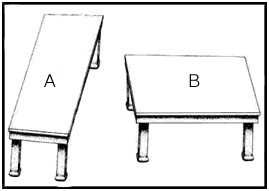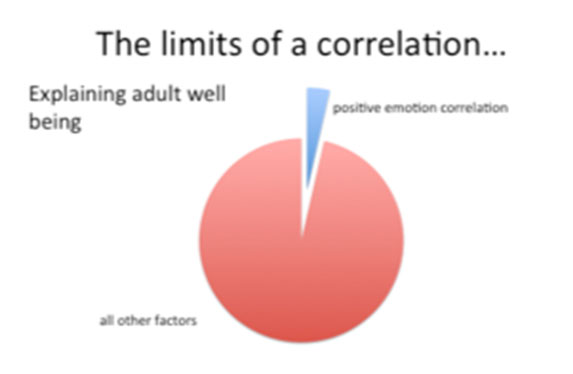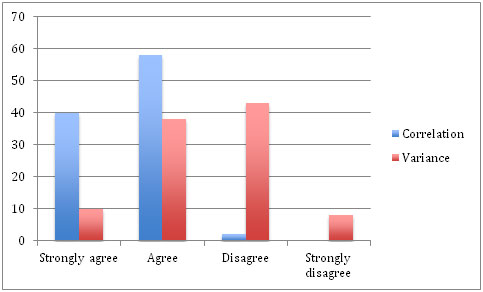Teaching Tips
Self-Knowledge in the Classroom
My colleagues and I have observed that some of our students take the same course multiple times with the goal of improving each time, but often only manage to accrue a dismal track record of failing or near-failing grades. Similarly, there are students who pursue a major that is clearly not a good match for them (as reflected in consistently poor grades), thereby often significantly delaying their graduation or dropping out as “failures.” Miller and Wrosch (2007) partially addressed this problem in their provocative article by calling attention to the possibility that culturally driven mandates to “never give up” may not always be the best advice. In neurocognitive terms, we can understand the problem as one of “perseveration,” or the persistence of the same behavior in the face of feedback that the behavior is incorrect.
We have found, for example, that cognitive perseveration predicts poor academic performance among male undergraduate students (Robertson & Lewine, manuscript under review). Male undergraduates who scored in the clinically impaired range on the Wisconsin Card Sorting Test repeated more courses, withdrew from courses more often, had lower GPAs, and graduated at a lower rate than non-perseverative men. While a dispositional tendency to persist can often produce positive outcomes (Robinson & Cervone, 2006), persistence in the face of repeated failure or an inability to use feedback can be harmful. There are numerous reasons, of course, why a student might not benefit from feedback, including motivation, lack of sleep, drug use, or failure to understand the task, among others. This article addresses the specific issue of awareness of self-performance in the context of a semester-long undergraduate course on personality.
Dunning, Heath, and Suls (2004) provide an excellent review of the many ways in which we all exhibit “flawed self-assessment.” That is, we often find it difficult to process our own thoughts, feelings, and behaviors as observing agents, thus falling victim to a range of cognitive distortions about who we are. Increasing emphasis on flawed self-assessment and self-awareness in my personality course has led me to consider the role of self-awareness in education more generally. It is important to emphasize that in this context, “self awareness” does not refer to “feeling good,” “getting in touch with your feelings,” or any of the dozens of other popular strategies for leading a “happier life” that we find in the book section of our local supermarkets. Knowing one’s self, as discussed below, can be stressful, although ultimately beneficial across a broad range of domains. Self-awareness may also be construed as a subset of meta-cognition in which the target of the meta-cognitive processes is the self (Hacker, Dunlosky, & Graesser, 2009).
Historical Context and Rationale for Self-Knowledge
Current pedagogy tends to emphasize critical thinking, especially as a set of skills applied to “real-life” problems embedded in a client-centered or business model (Cassara, 2008; Bok, 2003). It was not, however, always this way. Referring to the earliest days of education when it emerged from a theological or religious context, Delbanco (2012) wrote, “Going to college was an exercise in self-examination, self-discipline, and self-abnegation” (p. 74). Today, we are either less concerned with self-knowledge than in the past, or we assume that the ability to be aware of oneself as a cognitive agent is already present in our students when they arrive at college. It is argued here that this is not the case for many students and that attention to the development of self-knowledge is a necessary prior step to teaching critical thinking as well as preparing students for the “real world.”
Aside from the value of self-awareness in critical thinking, there is ample evidence that self-awareness is associated with a range of positive life outcomes in interpersonal relationshships, education, vocation, and mental and physical health (Miller & Wrosch, 2007; Wilson, 2009). Poor self-awareness contributes to potential negative outcomes in the form of tension or conflict between the conscious and unconscious self that is associated with personality problems and interpersonal difficulties, among others (Wilson, 2002). Thus, enhancing self-knowledge is not only an academic pursuit, but also a means for optimizing functional adaptation in the world.
Conceptual Framework of the Course
The cognitive, affective, and personality sciences have yielded convincing evidence of the existence of multiple aspects of self. Among these, the distinction between conscious and unconscious processes poses the greatest challenge to “knowing oneself,” as unconscious processes, by definition, are not available to simple conscious introspection. Put in a more mundane way, the conscious-unconscious distinction underlies the popular caution: “Don’t believe everything you think or see.” The view of self-knowledge represented in this course is consistent with that of Wilson (2009) when he wrote, “Self-knowledge is less a matter of careful introspection than of becoming an excellent observer of oneself and deducing the nature of one’s nonconscious dispositions and preferences” (p.386).
The trick, of course, is how to become an observer of oneself, especially of one’s unconscious processes. This course attempts to facilitate “self as other” (see Practical Considerations below) by presenting students with immediate, experiential evidence of their multiple selves that cannot be denied, with special emphasis on the immediate discrepancy between conscious and unconscious (or nonconscious) processing. When successful, students are faced with contradictory evidence between their consciously driven and unconsciously driven experiences.
The overarching framework for the questioning of experience is to reveal the existence of conscious (explicit; effortful) and unconscious (implicit; automatic) processes (Kihlstrom, 1987; Wilson, 2002), drawing on a wide range of psychological phenomena. Once acknowledging that significant aspects of the “self” may occur outside of awareness, students are prepared to adopt strategies for being critical thinkers with respect to their own experiences (see “debiasing techniques” in Lilienfeld, Ammirati, and Landfield, 2009).
The course syllabus (available from author) reflects a simple, dual-nature model of self, the conscious, and the modern unconscious (Kihlstrom, 1987). This model is revealed experientially via in class exercises and didactically via the assigned readings. These represent a broad range of personality theory along a molar-molecular dimension, where, for example, biochemical models of personality are contrasted to interpersonal theories.
Practical Considerations
Optical illusions represent an efficient and effective strategy for revealing the distortions reflected in our conscious perceptions. Consider as one example, the following illusion:

www.moillusions.com/2006/05/table-tops-optical-illusion.html
The table illusion is projected to the entire class, and students are asked to indicate which of the two tables is wider, A or B. By not giving a third choice of equal, the illusion is enhanced, although it is powerful even without this manipulation. The distribution of the responses (efficiently generated with iClicker technology) is projected to the class, with the majority of the class choosing B. Hardcopies of the illusion are then distributed, allowing students to physically compare the two tables (by cutting out the figures and placing one on top of the other). Such an immediate experience of change in point of view leads to a discussion of unconscious sensory processes that result in conscious perceptual-cognitive distortion. The point is not to understand the sensory mechanisms, but rather to appreciate, experientially, that what we see is not always accurate, thereby beginning to instill a healthy skepticism about the true value of one’s experiences.
Cognitive processes are also revealed to have both conscious and unconscious components. In class, we review an empirical study and discuss two different statistical strategies. We review details of the Harker and Keltner (2001) study that reported that positive emotions in women at age 21 predicted a number of “life outcomes,” including their well-being at age 52 (r = 0.27, p < .01). Students are then asked to respond to the following:
Positive emotions in young women are critical to positive life outcomes later in life.
A. I strongly agree
B. I agree
C. I disagree
D. I strongly disagree
Next, we discuss the differences between statistical significance, correlation, and variance, with a particular emphasis on “percent variance accounted for,” as illustrated in the following figure that we discuss in class.

Students indicate, a second time, the degree to which positive emotion in young adulthood is critical to positive outcome later in life. The results (below) reveal how different statistical procedures and explanations, while all “true,” can create very different impressions.

The third and final component to questioning the veracity of immediate experience is illustrated using classic experiments to create false memories (e.g., DRM paradigm; Deese, 1959; Roediger & McDermott, 1995). For example, the following words are presented, one at a time: awake, tired, bed, dream, wake, snooze, blanket, doze, slumber, snore, nap, peaceful, yawn, drowsy, exhausted, nightmare, rest. The class then votes (show of hands works well) “Yes” or “No” as to whether they’ve seen the following words: snooze, mother, bed, television, sleep, chair. A majority of students vote, with considerable confidence, that they’ve seen the word “sleep.” This exercise leads to discussion about associative cognitive networks as unconscious processes and the importance of “priming” to reveal the work of the unconscious.
All of these exercises and ensuing discussions are intended to reveal to students, “in the moment,” the multiple “selves” that affect any given perception, cognition, or behavior while simultaneously presenting core and foundational concepts in psychology.
Measuring Knowledge of the Self
While there is little doubt, as evidenced in spontaneous expressions of surprise and questions in class, that there is a growing awareness of multiple self-perspectives among students, this is not the same as actually measuring self-knowledge. Ideally, we should be able to track self-knowledge empirically over the course of the semester. To do this, just prior to each of four exams during the semester, we asked students to submit their predicted exam score. (I would like to thank Andrew Lewine for this suggestion). Students could earn modest extra credit by making accurate predictions of how they would perform. It was expected that over the semester, the students would improve their ability to accurately predict their scores, without necessarily improving their absolute grades. Results from one class are consistent with these expectations, where the correlation between predicted and obtained scores increased over the semester (Exam 1 = 0.31, Exam 2 = 0.37, Exam 3 = 0.30, and Exam 4 = 0.49), while mean exam scores (out of a maximum 20 points) remained consistent ( Exam 1 = 14.3, Exam 2 = 12.7, Exam 3 = 13.8, and Exam 4 = 13.0).
Subjective reports from the students are also encouraging:
- “I feel like SAC [self-awareness credit] really helped me keep myself in check. It helped me get a more realistic idea of what my abilities are. And I would have to say that I personally applied the SAC point idea to my other courses when I took those exams as well. I have to say that I have done far better in my classes all around this semester”.
- “I find the more I use this critical thinking tool the better I have become at the prediction. I am not expecting one grade and getting another. This has lowered my anxiety of disappointment”.
The relationship between self-knowledge and fit with the environment is captured, in part, by the student who wrote, “I am not expecting one grade and getting another. This has lowered my anxiety of disappointment.” As students get to know themselves better, negotiation with the environment has the potential for being more productive. In this student’s case, lowering of anxiety via self-knowledge was viewed with enough value to use it in other classes.
Some Cautions
“Self” examination does not, however, come without cost. Consider the following spontaneous email from one of the students in the class:
“…this class has seriously made me constantly think about myself, and I have recently started to read on Buddhism, and I am finding so much overlap between Buddhist philosophy and this course. I have been medicated for General Anxiety Disorder for about 2 years now and the past half year I have barely even noticed any anxious thoughts. I have previously only thought about anxiety on the neuroscience/chemical level because I feel that’s the direction pharmaceutical companies are trying to push us. All of this talk about suppression of thoughts and feelings and conflict has begun to increase my anxiety levels again. A lot of work I have read on anxiety supports that anxiety is a life-long condition. Do you believe the pursuit of knowing thyself can eventually wipe out anxiety? Is an increase in anxiety levels a natural part in knowing thyself?”
This example reveals that the course stimulated student concerns reflected in a pre-existing disorder. Such an example is a powerful illustration of both the effectiveness of the course and its potential risks. Educators who offer the types of courses outlined in this article must be ready to engage students actively outside of class, including helping students find appropriate help if needed. This particular individual had a positive outcome: The student became more accurate in predicting his/her exam scores, improved his/her exam scores over the semester, made use of the course to examine him/her “self,” and no additional intervention (other than the student’s pre-existing use of medications) was necessary.
The results are encouraging, although it is recognized that much remains to be explored and tested, and that there is always room for further refinement. In addition, there are several issues that have not been addressed, such as the relationship between self-knowledge and academic performance, the contributions of practice versus education in the improvement of predicting exam performance over time, long-term benefits of enhancing self-knowledge, the extension of self-knowledge to broader domains of personality style or dispositions, self-knowledge as a cognitive process, and the role of self-knowledge in the development of critical thinking. In short, there are still questions that need to be answered by empirical science regarding the construct validity of self-knowledge, but these are important and worthwhile questions to pursue. In the meantime, the pedagogical perspective adopted for this course can proceed, for at the very least, it stimulates an informed engagement with psychological concepts.
Principles and Practices
There are several principles and practices that should be considered by readers interested in using the self-awareness perspective.
- Error is at the core of self-awareness. In contrast to the error-free learning often advocated in education, there is now ample evidence of the importance of making and correcting mistakes in learning across a broad range of domains (Roediger & Finn, 2009). Recognizing, acknowledging, and correcting mistakes about one’s own experiences and beliefs are the key to learning.
- Recognizing and acknowledging “self” mistakes does not come naturally. None of us enthusiastically seek our mistakes, and finding them is often at the cost of some emotional unpleasantness, at least initially. It is therefore critical that the instructor appreciates the need for and facilitates an accepting and supportive environment.
- Model self-awareness. By using appropriate personal examples, the instructor can demonstrate an accepting attitude in addition to highlighting the value of self-awareness. For example, in one of my lectures on the tension between conscious and unconscious processes, I relate my own experience with an “anniversary reaction” in response to my mother’s death some years ago. After several years of being surprised by my irritation and depression (and me being a trained clinical psychologist!), it required my spouse suggesting to me what was happening for me to recognize it.
- Start with the fun stuff. We must all be seduced into self-awareness, and I know of no better tools than humor and optical illusions. However, both must be selected carefully to fit the substantive material of the lecture or discussion. In addition to the examples provided above, the interested reader can search the web for dozens of optical illusions. To provide an entertaining and more focused use of how we can’t always believe what we see, consult Macknik, Martinez-Conde, and Blakeslee (2010), who explore the neuroscience of magic. As for humor, Cathcart and Klein (2007) provide a treasure trove of stories, jokes, and anecdotes that explicate core principles of philosophy and are applicable to the many cognitive distortions that interfere with accurate self-awareness.
It seems fitting to close this article with a Groucho Marx quote that Cathcart and Klein used in the opening dedication to their book:
“These are my principles; if you don’t like them, I have others.”





Comments
This is a very interesting subject for any one who want to improve their self being. thank you
APS regularly opens certain online articles for discussion on our website. Effective February 2021, you must be a logged-in APS member to post comments. By posting a comment, you agree to our Community Guidelines and the display of your profile information, including your name and affiliation. Any opinions, findings, conclusions, or recommendations present in article comments are those of the writers and do not necessarily reflect the views of APS or the article’s author. For more information, please see our Community Guidelines.
Please login with your APS account to comment.